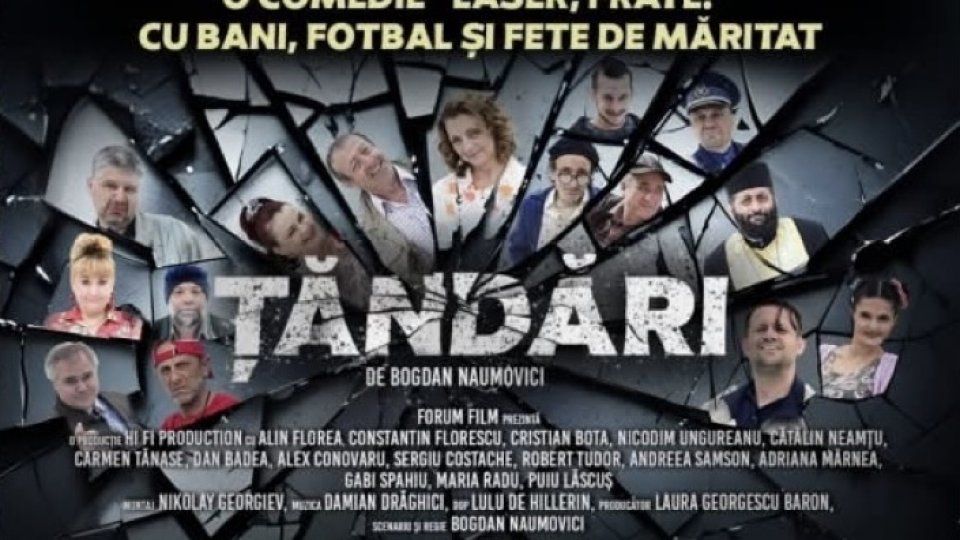Bucharest in Literature. Six Possible Readings of the City
“Bucharest in Literature. Six Possible Readings of the City is a sort of experiment on the many forms of relation between the city and its literary projection

Corina Sabău, 06.05.2017, 14:05
Andreea Rasuceanu’s new book, “Bucharest in Literature. Six Possible Readings of the City” is a sort of experiment on the many forms of relation between the city and its literary projection, between the perception of the author and that of the reader, between the various interior maps and the different ways of reading the urban landscape. According to writer and literary critic Cornel Ungureanu, “Andreea Rasuceanu offers an image of Bucharest that formed as a result of the reading of several novels written by authors that define the current Romanian type of writing.
The readings proposed by this book anticipate in fact a new research method, that of geocriticism”. Here is critic Andreea Rasuceanu herself: “What I focused on in my book was the idea of the city itself. The city as a construction, the city as a fascinating object, the city as our second body that cannot be ignored. This is what I started from, so the idea of literary geography captivated me from the very beginning. As I mentioned in the book’s foreword, I started off having two goals in mind. On the one hand, to make the readers who are passionate about contemporary literature, which I have been focusing on lately, to actually see the city and have a different perspective on it, filtered with the help of these texts. On the other hand, I wanted to familiarize the readers who are passionate only about the history of this city, with the writings of these contemporary writers. So this was my intention, to offer a 2-type reading of the city, one via literature and one that is in fact a journey through literature via these literary cities.”
“Bucharest in Literature. Six Possible Readings of the City” speaks about the image of the city as it appears in the works of 6 writers from different generations. In the books of Mircea Cărtărescu, Gabriela Adameşteanu, Stelian Tănase, Simona Sora, Filip Florian and Ioana Pârvulescu, Bucharest becomes a character. Each chapter includes an interview, which is uncontested evidence pointing to the similarities and differences between the critic’s outer perspective and the way in which the writer experiences his or her relation with the city.
Here is Andreea Răsuceanu at the microphone with more: “I also found this relation interesting, between writers and the space they describe. They describe the contemporary space, the space that they are living in, which they see and experience every day or the space of past ages. I noticed that Gabriela Adameşteanu makes very ample descriptions of Bucharest as it was before 1989, and her descriptions could be good study material for anthropologists, for those who want to see what Bucharest was like back in the 1970s or 1980s. Her descriptions of Bucharest are very detailed. I discovered in Gabriela Adameşteanu’s prose a very sensory city, reconstituted through all sorts of visual, sound and tactile clues. Her characters are perfectly connected to the rhythm of the city, to its speed, to what’s going on outside, which is a projection of what’s going on inside. Likewise, the urban landscape has a very big impact on the inner life of characters.”
“If you say literary Bucharest you say Mircea Cartarescu. He managed to impose a certain image of Bucharest, an unmistakable one, as he is the Romanian writer most concerned about the image of this city. Any literary emblem of the literary Bucharest should first and foremost contain emblematic phrases of Cartarescu’s prose about the alter-ego city, the body-city or the city as an inferred space, discovered, tapped by means of senses, a city of mythical addresses”, as Andreea Rasuceanu put it.
“I have allotted the largest space in the book to Mircea Cartarescu but without premeditating it. ‘Solenoid’ appeared at a moment when I was preparing to complete the book, so it just happened. I read the book and I realized that it completed that image of Bucharest, which first appeared in another book by Cartarescu, ‘Orbitor’ (Blinding). The city has been given immense coverage in his books; we have the most spectacular city here where various facets of this city are presented; it’s an extension of the narrator’s body, an anatomic structure where the demolition of a building is tantamount to removing a vital organ. On the other hand, an entirely original image is the image of the alter-ego city. It’s an extraordinary metaphor that begins the book ‘Blinding’, with little Mircea in his now famous apartment on ‘Stefan cel Mare’ street who sees his reflection in the window, a reflection that is juxtaposed to the image of the city. This image is used by Mircea Cartarescu throughout the book in different guises. The city becomes a text, one that is written by the narrator at that very moment.”
“The six chapters of the book turn Bucharest into one of the great post-modern cities. It becomes readable and reveals itself to us as a passionate city, deserving of our love. It comes to us in an anthropomorphic guise and we are able to explore its magic core through a palimpsest, as a character that takes shape through the subjective feelings of other characters” — this is how Tania Radu describes the book “Bucharest in Literature. Six Possible Readings of the City”.





























